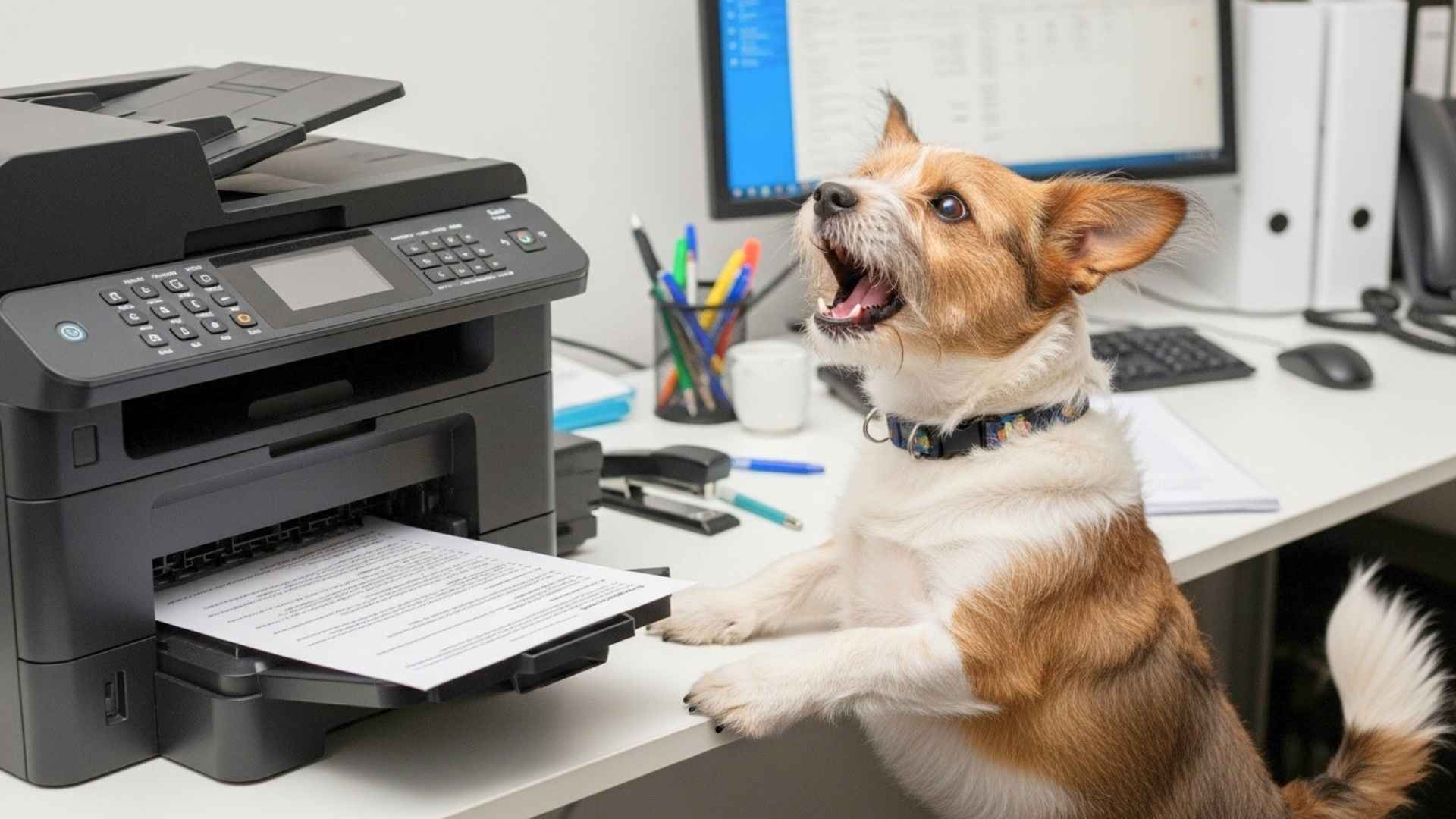You’ve probably seen dogs go bananas at unexpected sounds—but printers? It turns out, dogs’ super-sensitive ears may explain a lot. Studies show that dogs hear better than humans, meaning that a printer’s whirring is not just audible—it’s intrusive, sharp, and attention‑grabbing. For a dog, that noise registers like a spotlight on a quieter stage—even if it seems trivial to us
When a printer kicks on, some pups may read it as an intrusion—an unfamiliar hum interrupting the calm. Their reaction isn’t random. Research shows dogs can discriminate between types of barks (alarm, play, solitude), demonstrating that barking is grounded in meaningful context and emotional response, not just noise.
So when certain dog breeds bark at printers—whether it’s the fussy buzz, the shifting carriage, or that sudden electronic pulse—they’re doing more than voicing annoyance. They’re reacting to what they hear as a signal: something out of place, unpredictable, maybe even a threat to the routine.
Dog breeds that bark at printers when they work
Here are the most vocal breeds:
1. Chihuahua
Tiny but fierce, Chihuahuas don’t just bark—they sound the alarm. These pint-sized watchdogs are hardwired to react. Whether it’s a stranger at the door, a weird noise in the room, or your printer suddenly coming to life, they’ll make sure you hear about it.
Their intense loyalty and big personality often mean they feel it’s their job to protect their space, even from office equipment.
Why They Bark at Printers
Hyper-alert to new sounds, especially mechanical ones like a printer starting up.
Barking is their go-to way to communicate confusion or concern.
Unique Chihuahua Traits
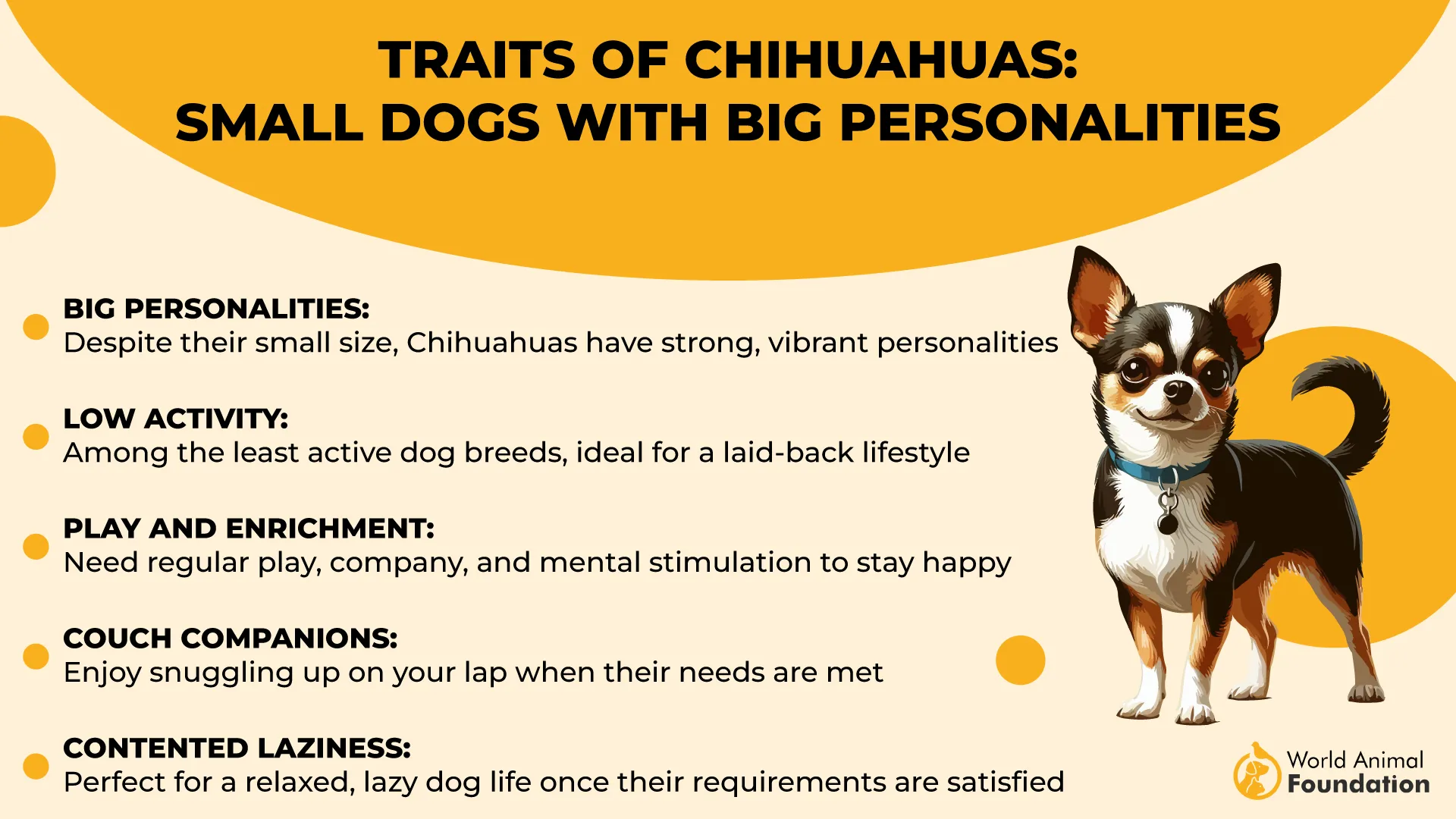
World’s smallest dog, with a huge attitude packed into a tiny frame.
Large, expressive ears pick up every unusual sound.
Often have an “apple-shaped” head, one of the breed’s distinctive features.
Things to Consider
Not suited for rough play or homes with very small children.
Can be prone to nipping when startled or stressed.
Sensitive to cold; may need a cozy sweater to stay comfortable indoors.
2. Pomeranian
Feisty and full of opinions, they’re alert, sharp, and very aware of their environment, especially if something changes or makes unexpected noise. Their barking isn’t random. These pups have learned over time that their voice gets results, whether that means attention, a treat, or someone checking the room.
What Triggers Their Barking
Barking becomes a learned behavior to get attention quickly.
Feelings of vulnerability due to small size make them reactive.
Unique Pomeranian Traits
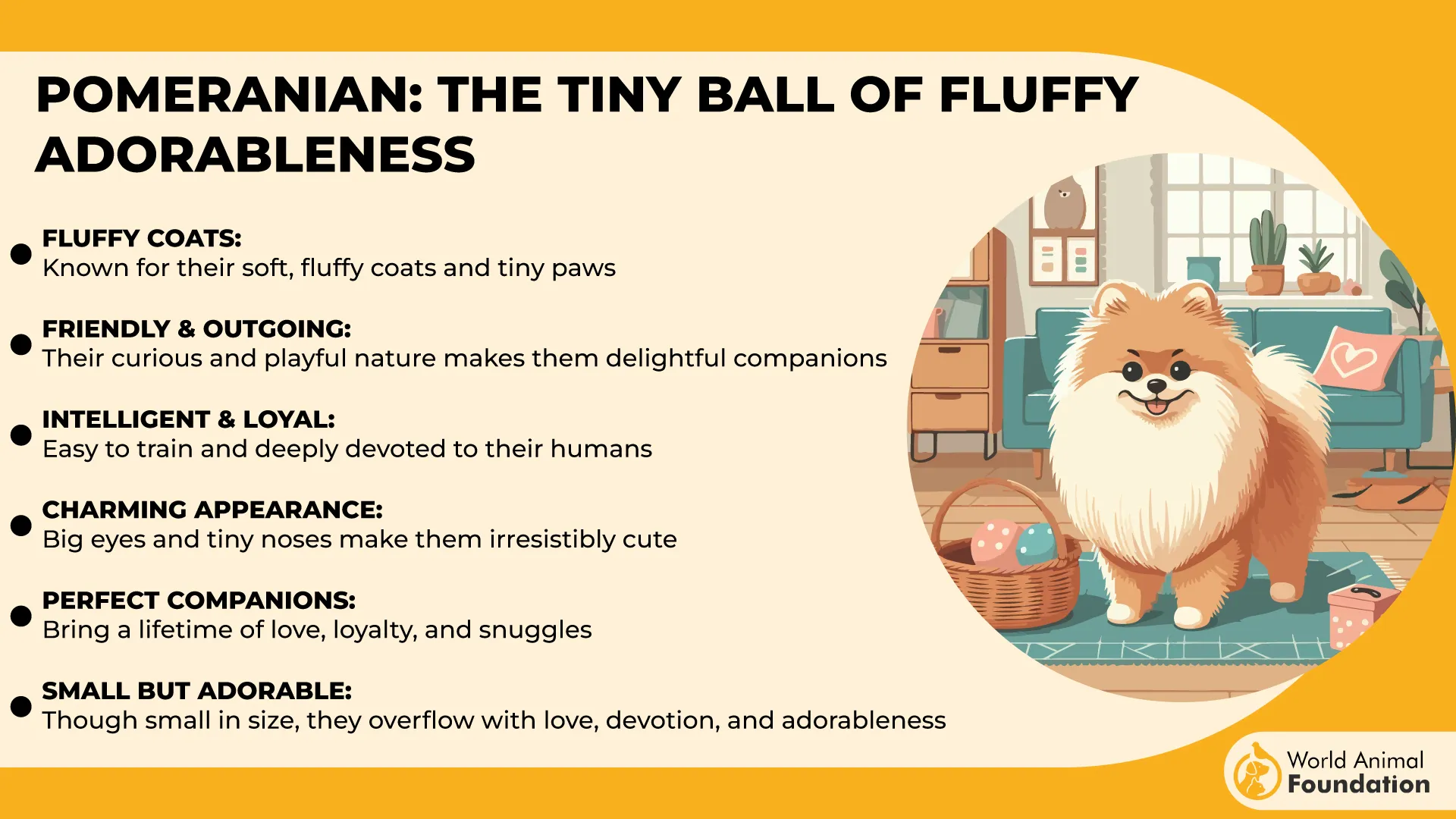
Thick double coat, fox-like face, and fluffy tail make them easy to recognize.
According to PetMD, they are known for their “smiling” expression and naturally perky demeanor.
Some Poms even change color as they age—unexpected and fascinating.
Lifestyle & Insights
High-energy but don’t need large spaces—perfect for apartment life.
Social, smart, and thrive with early training and a consistent routine.
Do best on high-quality food, often favoring fresh or canned meals.
3. Beagle
These scent hounds are hardwired to vocalize. Their classic baying howl, which can clock in around 100 decibels, was designed to be heard across open fields during hunts.
Even if they’re not on the trail of a rabbit, their instinct tells them to announce… something is happening. Loudly. Constantly. And usually with a purpose. It’s not misbehavior—it’s centuries of training built into their DNA.
Why Beagles Bark at Printers
Printer vibrations may mimic prey sounds, triggering a vocal response.
Can’t resist adding commentary when people are talking or moving nearby.
Unique Beagle Traits
Often have a white-tipped tail for visibility in tall grass.
Referred to as “a nose with feet” thanks to their tracking focus.
Care & Behavior Tips
Need regular walks to avoid boredom and manage their weight.
Love being in a group—great with other dogs or animal companions.
According to WebMD, they respond well to praise and mental stimulation like scent-based games.
4. German Shepherd
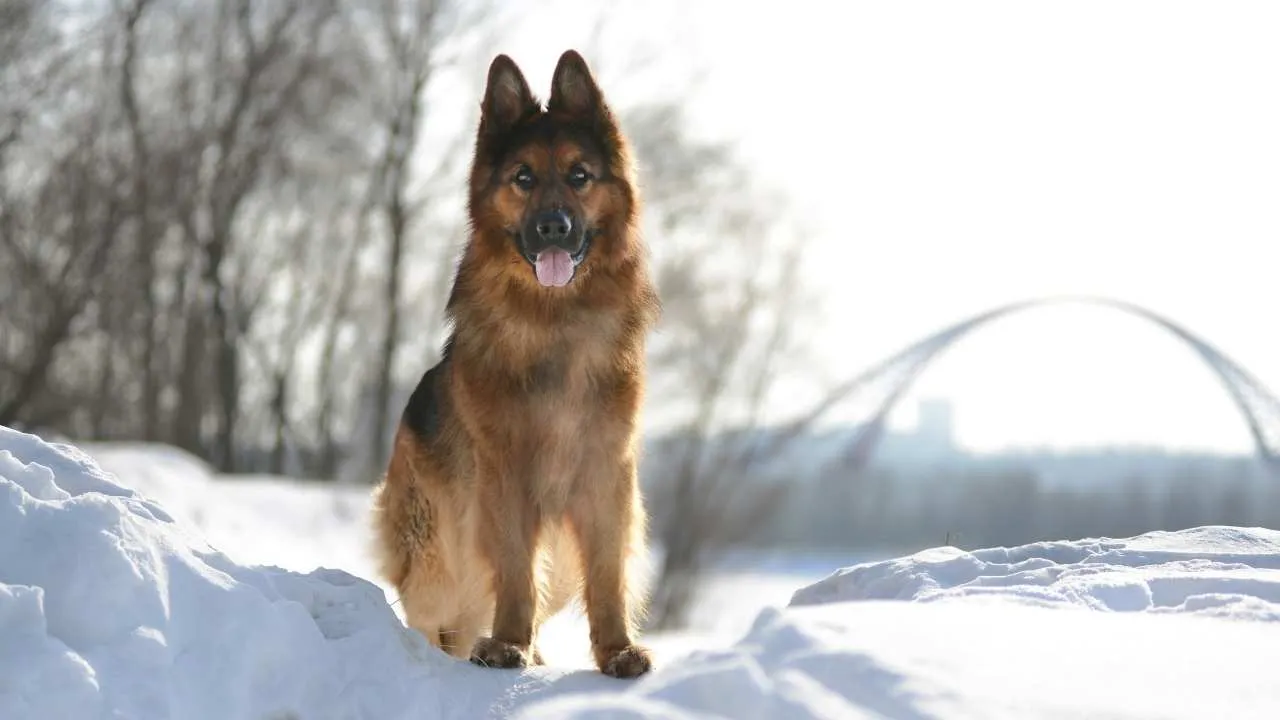
A German Shepherd locks in with a low growl followed by a thunderous bark; it’s not just noise—it’s instinct. These dogs were meant to act, not second-guess.
A whir, a click, or the motion of paper sliding across the floor is all it takes to trigger their protective reflex. Their deep, commanding voice isn’t just loud—it’s a signal. It’s their way of managing what they view as danger.

Why German Shepherds Bark at Printers
React to mechanical movement as if it’s something to control.
See it as their duty to hold the line and check anything new inside the house.
Breed Highlights
According to the American Kennel Club (AKC), they are incredibly smart and focused—and can learn complex commands with ease.
Athletic, confident frame with a sharp, observant view of their surroundings.
Built for work: detection, security, tracking, and even calming therapy roles.
A house with a German Shepherd
Need plenty of room to release energy and exercise their feet.
Respond best to praise over punishment—keep sessions short but engaging.
5. Dachshund

A barking dog with a purpose, the Dachshund is wired for noise and always on alert. These small, sharp-nosed hunters were originally developed to chase badgers underground, and that persistent energy hasn’t gone anywhere. They’ll start vocalizing the second something shifts.

Why do Dachshunds Bark at Printers
It’s not misbehavior; it’s instinct layered with a bit of attitude, nothing that can’t be fixed with praise.
Once the dog barks, they don’t easily stop barking, especially if they think it’s their job to alert the house.
What Makes Them Unique
Small but mighty hunters, they’re always ready to play or explore.
Can be stubborn during training, but responds well to food-based praise.
Often amusing, with a bold personality that surprises new owners.
Life With a Dachshund
Love routine—when things change, expect a lot of vocal feedback.
Do best with consistent rules, clear order, and plenty of structured play.
Will bark happily at family members coming back, but also when bored or restless.
6. Basset Hound

These dogs were called into dense brush not to chase, but to track—slow and steady, following scents while owners followed the sound of their baying. Their bark isn’t just loud; it’s purposeful.
Left alone or unstimulated, they’ll often use their voice to express boredom or frustration. And if you don’t start training early, they’ll happily continue that habit for years.
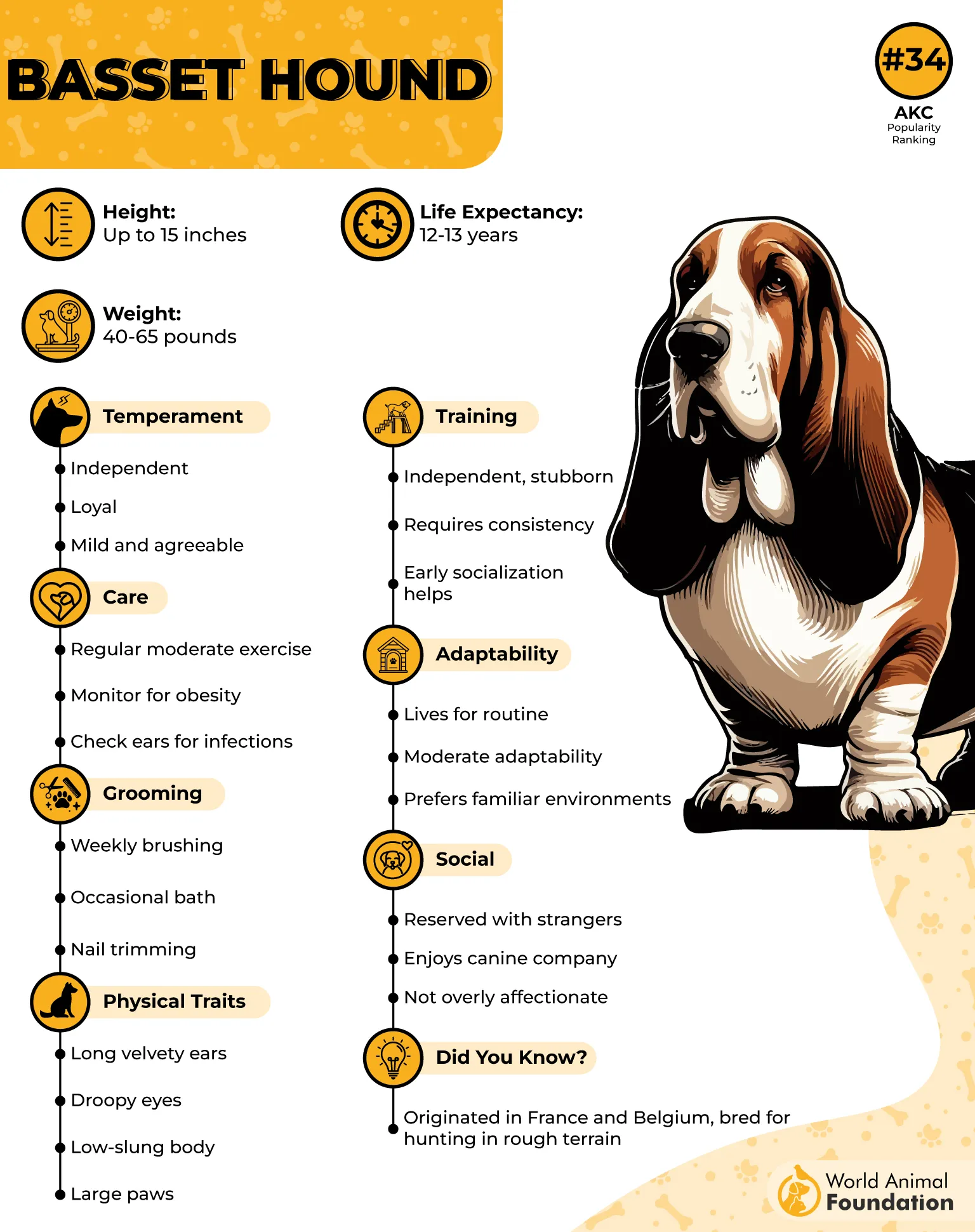
Why Do Basset Hounds Bark at Printers
A printer’s mechanical noises—whirring motors, clunking paper feeds, or those high-frequency squeals we barely notice—can easily startle or annoy them.
What’s quiet background noise to you can sound like a full-on robot invasion to a Basset Hound.
Why Basset Hounds Are So Vocal
Naturally inclined to use their howl to help others find them in the field.
Barking can escalate when left alone for too long during the day.
Their need to be heard is part of their pack nature and working design.
Distinct Basset Hound Features
Their loose skin, long body, and droopy eyes create a truly unique form.
Exceptionally sensitive noses that continue tracking even days after a scent trail.
Their floppy ears and wrinkles are not just cute—they stir and trap scent as they move.
7. Rottweiler

Rottweilers don’t bark for fun—they bark with precision. Unlike more reactive breeds, Rottweilers conserve their energy until it’s needed.
They thrive in households that offer structure, firm guidance, and plenty of mental engagement. When given purpose, their instincts shift into a calm, grounded presence that brings a strong sense of order to the home.
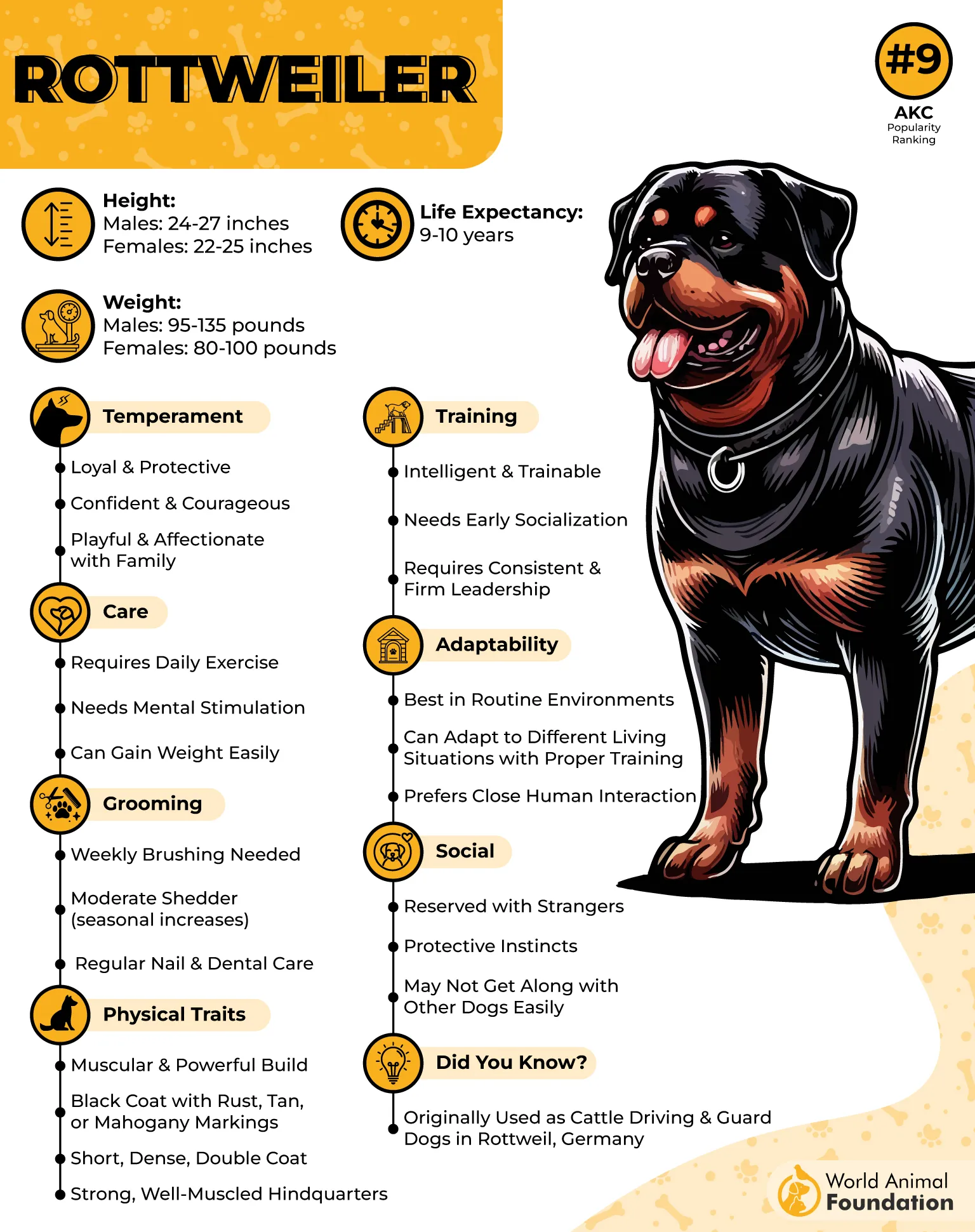
Why Rottweilers Bark at Printers
A printer, especially one that’s loud or rarely used, can set off alarm bells. The barking is often a warning: “Something’s moving, it’s noisy, and I don’t trust it.”
These dogs thrive on routine. A sudden burst of printer noise during their quiet time or nap? Instant protest.
Defining Characteristics
Show strong ethics inherited from their past as herders and pullers.
Every move they make takes intent—they’re never chaotic or unpredictable.
Their behavior is often shown through body language long before they bark.
Daily Life with a Rottweiler
A well-trained Rottie will stay calm around chaos and help create a peaceful environment.
Thrive when they have a responsibility—it forms their identity and keeps them engaged.
Conclusion
Dogs bark for all kinds of reasons—but when the noise comes from inside the house, it often feels personal. Whether it’s an unfamiliar sound in the room or movement that distracts them, many pets react fast and loudly. Some were called to service generations ago and still carry those instincts. Others just want attention, a reward, or to alert their family to something they perceive as danger.
The key isn’t to yell or try to shut them down. Instead, use praise, redirection, and the right toys to channel their energy. If your dog uses their mouth to communicate more than you’d like, take the time to listen. Then train. Then adjust. Talking less often comes after feeling heard and safe.


